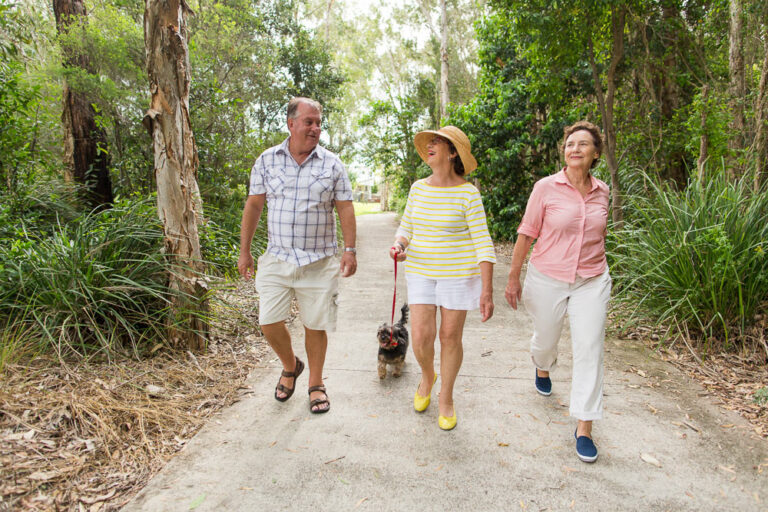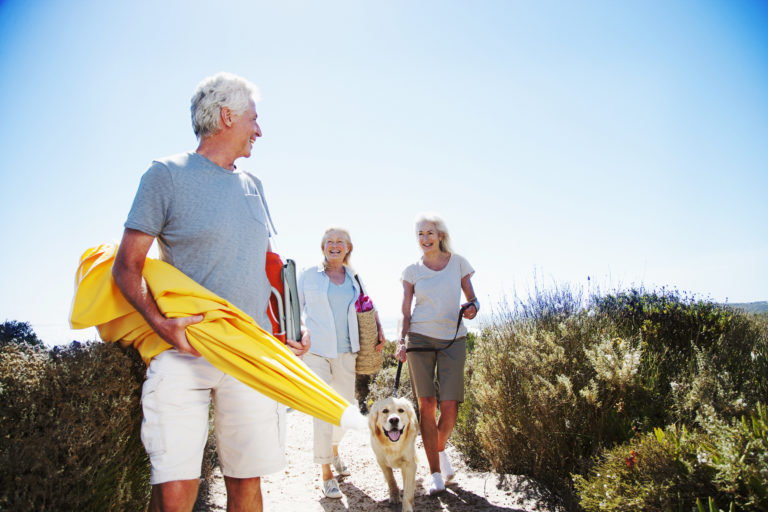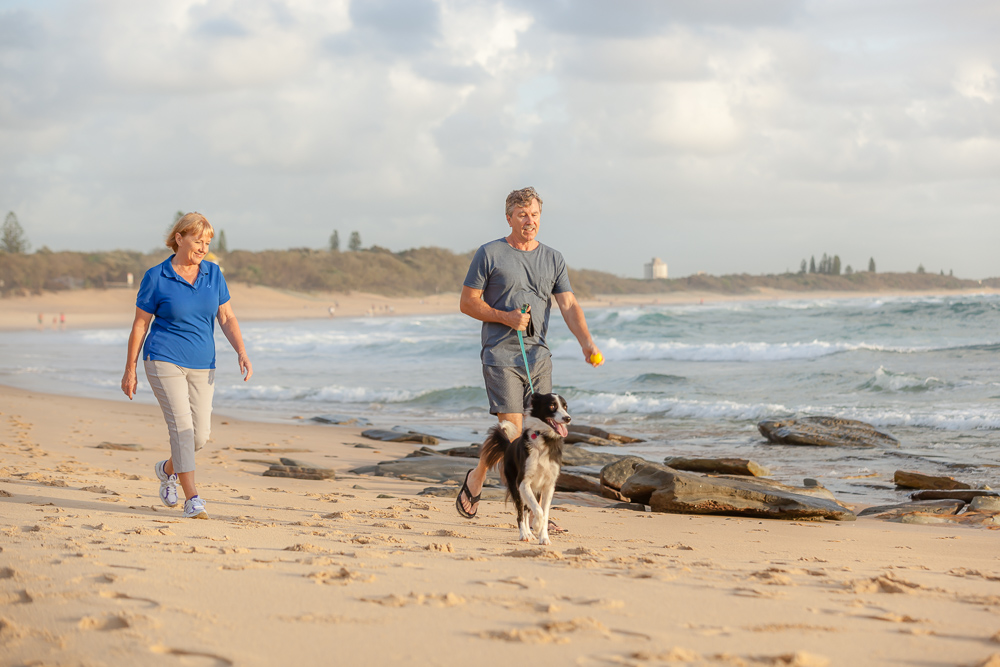10 exercises to prevent osteoporosis
We have provided 10 exercises you can do to help build stronger bones and prevent osteoporosis

Osteoporosis is a common disease that affects more than one million Australians. The disease causes bones to become fragile, leading to a higher risk of fractures and breaks.
Osteoporosis occurs when bones lose minerals, such as calcium, more quickly than the body can replace them and this results in a loss of bone density.
This disease affects both women and men, and is most common in adults over the age of 50. Women are at a greater risk of developing the disease because of the rapid decline in oestrogen levels during menopause. When oestrogen levels decrease, bones lose calcium and other minerals at a much faster rate. While men also lose bone as they age, testosterone levels decline at a more gradual rate, so their bone mass remains adequate until later in life.
The good news is that osteoporosis can be prevented by looking after your bones as part of your general health, maintaining healthy muscles, and engaging in regular physical activity.
Regular physical activity helps maintain bone mass, increase muscle strength and improve your balance. The best types of exercise for minimising the risk of developing osteoporosis are weight-bearing exercises and strength training.
Exercises such as swimming and cycling help improve cardiovascular fitness and build muscle strength, but are not as effective at preventing osteoporosis as weight-bearing and strength exercises.
It’s always best to check with your doctor before starting any new exercise regimen to make sure it’s safe for you to do so.
Here are 10 exercises to help build stronger bones and prevent osteoporosis:
1. Aerobics
Aerobics exercise classes can do wonders for improving your bone strength and strengthening ligaments, tendons and muscles. By stimulating the growth of tiny blood vessels in your muscle tissues, aerobic exercises can also help improve the oxygen supply to your muscles, which in turn helps reduce pain experienced by people with muscle stiffness or chronic lower back pain.
2. Balancing
Balance exercises play an important role in looking after your bones. Working on your balance can improve your stability and prevent falls, and this is important because falls can lead to fractured or broken bones. Types of balance training can include standing on one leg, tai chi, yoga, or balancing on a Bosu (a two sided fitness tool: one side is a solid flat platform, and the other is a soft dome resembling an exercise ball).
3. Dancing
Dancing is not only a good way to maintain bone health, it’s also fun and engaging too. Dancing often involves steps of elevation and transferring weight from foot to foot. When you land from these kinds of movements, you put additional tension on your muscles and pressure on your bones. In turn, your bones react to this pressure and strain by becoming stronger.
4. Walking
A brisk, daily walk is a great exercise to help build your bone health – and it’s good for your heart, too. Aim for 30 minutes a day at least four times per week. If you’re worried about uneven or cracked walking pathways, a treadmill is a great alternative.
5. Climbing stairs
While walking is a great bone-building exercise, climbing stairs can be considered as taking it up a notch in terms of putting increased stress on your muscles and joints to build strength. This is because when you’re climbing stairs, it requires more balance and muscle work than walking does. So, every now and then, if possible, consider taking the stairs instead of the lift.

6. Playing tennis
Playing tennis gets you whole body moving, but is particularly great for building bone strength in the legs and arms. Bone mass is directly affected by what parts of the body you’re exercising. Running in different directions, transferring body weight from foot to foot, and swinging the racket with your arms help build your muscle strength and improve your bone health.
7. Squats
This is a lower-body exercise which can be done with your own bodyweight, or with added resistance such as dumbbells. Squatting mainly targets the thighs and glutes. However, core strength and stability, ankle mobility, back muscles, calves and other body parts play an important role when you are doing this exercise. Squats help increase tendon strength, build muscle and improve bone density.
8. Weights
Lifting weights helps strengthen your muscles and bones at the same time. If you’re new to lifting weights, you might like to start off with light dumbbells and gradually add more weight as you go. Maintaining strong muscles through lifting weights helps to keep up your balance and coordination, and this in turn helps prevent falls and related fractures.
9. Lunges
To increase bone density, you have to surprise the skeletal system with diverse exercises that require unfamiliar loading patterns or changes in movements. This is why lunges are a great exercise to build bone strength. They add stress to your bones (in a good way) by increasing force by tugging on your bones from different angles, and adding impact when you step down into the lunge.
10. Sit-ups
This abdominal exercise helps build core muscles and improves flexibility in your back and hips. Having flexible back and hip muscles improves circulation and can even help reduce stress. Whether you use your bodyweight or add extra resistance, such as dumbbells, sit-ups help improve your bone health by putting extra strain on the muscles and bones to make them stronger.
Physical activity and exercise plays an important role in maintaining or improving bone density. However, exercise must be regular and ongoing to have a proper benefit.
Remember to always start your exercise program at a low level and progress slowly. Exercise that is too intense, too quickly may increase your risk of injury. It’s always best to consult your doctor for a plan that is best-suited to your individual needs.

Keep healthy and active with IRT
At IRT, we’ve been helping older Australians live their best lives for more than 50 years. We offer retirement living, residential aged care and home care services in various locations across NSW, ACT and Qld. We believe it's our values as a community-owned provider that help us to be the best at what we do.
Find out moreYou may also like
10 health benefits of a morning walk
It's free, low-impact and a great way to start your day!
9 ways to stay active in retirement
From keeping fit to learning a new skill, there are still plenty of ways to stay active and healthy throughout your retirement.


